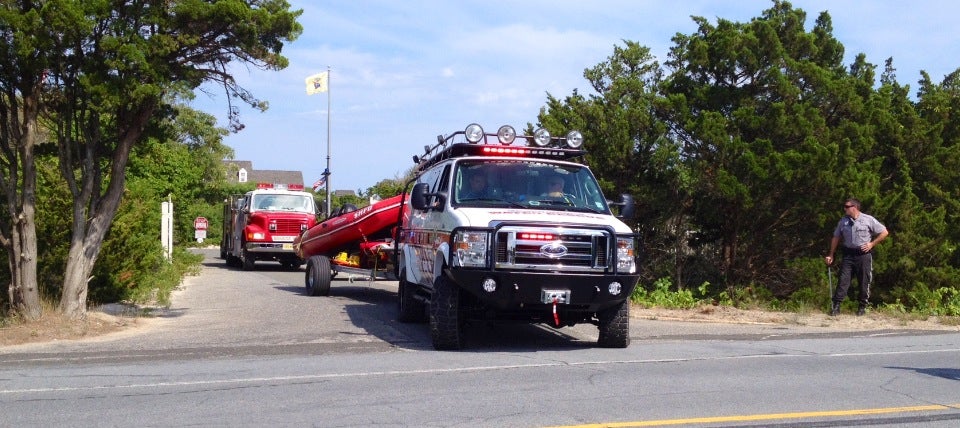A running lizard slips and falls. Can that make seniors safer?
Listen
A Seaside Heights water rescue truck departs the Governor's Mansion in Island Beach State Park Thursday afternoon. Units were on hand at the location to establish a landing zone for a medevac, which was later cancelled. A woman pulled from the ocean was then transported by an ambulance to a local hospital. (Photo: Justin Auciello/for NewsWorks)
If you study them closely enough, maybe animals in motion can help humans move better — or even robots.
That’s the idea behind the work of Tonia Hsieh, a biology professor at Temple University. On Thursday, she will speak at the Wagner Free Institute of Science in North Philadelphia.
“My workhorses are lizards, spiders — big, hairy ones — crabs and cockroaches,” said Hsieh. “I subject them to some challenging situations, and I see how they contend with them.”
For example: a lizard that runs on two legs on a runway. Most of the track is grippy, but one patch is slippery. The running lizard is quickly presented with two options.
“They slip and fall or they slip and recover,” Hsieh said. “And we are really interested in trying to understand what causes them to recover versus what actually causes them to fall.”
If she can understand that, Hsieh said, maybe the secrets of lizard balance can one day help seniors avoid silps and falls.
Or maybe they can help robots deal with sand and other tricky surfaces.
“They probably would have eventually figured that out,” Hsieh said of a team of roboticists who used her lizard data to build a robot that wouldn’t dig itself into a hole. “But by looking at a biological organism, they were then able to say, ‘Oh, maybe this is what’s actually going on.'”
Hsieh’s work is aided by a bevy of high-speed cameras, which can shoot up to 1,000 frames per second. There’s motion-tracking sensors often seen in video game design, too.
You can get a feel for the research in the video below. A film series sponsored by GE recently stopped by Hsieh’s lab. It was produced by a local production company and later picked up by GE’s Focus/Forward project.
WHYY is your source for fact-based, in-depth journalism and information. As a nonprofit organization, we rely on financial support from readers like you. Please give today.




